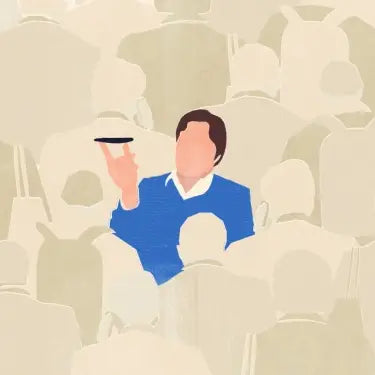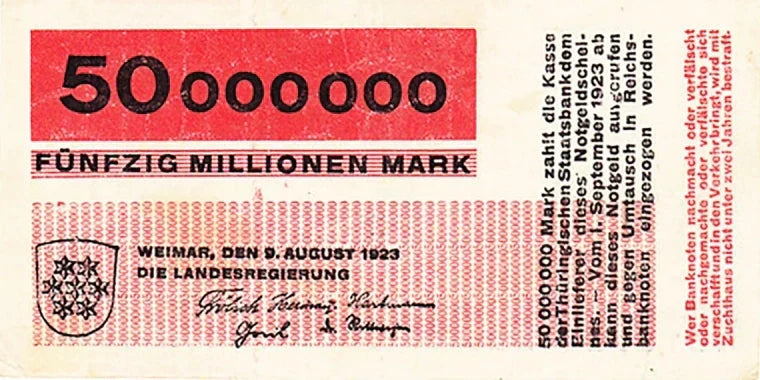Non-physical money: Part 2

Herbert Bayer, Notgeld, 1923. Hyper-inflation bank notes from Weimar Germany.
Part of a series of essays on the subject of cash versus computer-based financial exchange.
The spectacular global shift away from using cash for transactions, accelerated by the Pandemic, is yet another example of an immense social change that is scarcely being analysed or discussed; rather than being a conscious democratic decision arrived at after informed debate, it is “just happening”. Its proponents believe that it will improve our lives, but is this just another case of short-term convenience at the cost of vast unintended consequences?
The move from physical financial tokens to having wealth recorded by electrical charges on pieces of silicon spread across the planet is just one example of our relentless shift away from physicality.
Viewed in isolation, these changes are easier to accept in the name of (apparent) convenience. But it is essential to recognise how they are operating together, and doing so in a way that does not increase our overall well-being. In order to achieve this, we need to resist the temptation to simply say “hmm…that’s an interesting point” and move on. If we want to be able to possess a fact-based opinion about the influence of technology on our species and on ourselves as individuals, we need to carefully ‘join the dots’ and assess the trajectory as a whole.
So, getting back to money, electronic payment is generally quicker than cash (except when there is a technical problem). Fast food is also known for being quick. But speed is not everything, which is why we have seen the emergence of the ‘slow food’ movement.
In a shop, paying by cash takes a few moments longer, and when most people do it, this can lead to slightly longer queues. Which means more time spent in the company of other people. Like different species’ congregating at an African water-hole, members of all generations, all social groups, come (or came) together in food shops, at the post office, in cafés, etc. But waiting in a queue is (or was) not dead time. It is (or was) an opportunity to catch up with friends and get talking to strangers - or at least to acknowledge the existence of people other than oneself and outside of one’s personal social circle.
And then there is the interaction with the employee behind the counter. Without cash, they can be ignored, and increasingly, they are indeed ignored. Hold card, phone, or wrist-mounted device next to the payment terminal, and leave. Contactless, in more ways than one. As well as the post-social elements, paying electronically means we have no need to practise our motor skills (along with average IQ levels, dexterity is now diminishing - except for interaction with computers) by picking out the correct notes and coins; no need for the employee to do the same in providing change (and nowadays, usually no need to calculate the total cost by using mental arithmetic); no need to check for forgeries, foreign coins, etc.; no need for the customer to check that the correct change has been given. In summary, no need to be present in any meaningful way. No need to look up from the algorithm-directed existence offered by some charming little screen.
You can read Part I of this series here.











